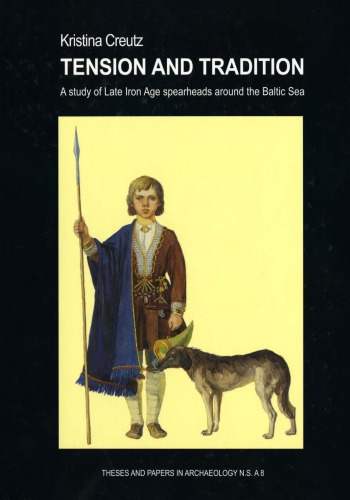Product desciption
Tension And Tradition A Study Of Late Iron Age Spearheads Around The Baltic Sea Kristina Creutz by Kristina Creutz 9789172656352, 9172656352 instant download after payment.
Doctoral thesis at Stockholm University 2003.
This thesis discusses spearheads and individuals in Estonia, Latvia, eastern Sweden, Finland and western Russia during the 11th century. The source material consists of 335 spearheads of type M according to the typology of Petersen from 1919. As a complement, a limited number o f historical, social anthropological and ethnological sources have been used. All in all, the author has visited 20 museums around the Baltic Sea during a period of tremendous political change, and she has taken advantage of the natural field of tension which the different research environments have produced. Central questions are whether individual weapon-smiths can be discerned in the archaeological material, the role of the weapon-smith in the prehistoric society, and the possible role of Gotland in the weapons trade. Another important question concerns the differences among the societies around the Baltic Sea. Did the societies really differ to the extent that we tend to believe, or are our interpretations based on old ideas of culture-bringing and nationalism?
The thesis contains a detailed analysis of the archaeological material. The importance of direct contact between the researcher and the spearheads is stressed. Several individual weapon-smiths are discerned. It is mainly the personal touch in their work that makes this possible, even though they apparently used the same idea of a spearhead as their starting-point. The weapon-smiths seem to have worked within certain smith-zones in all the studied countries, some larger and some smaller. This indicates a local production, not trade as earlier believed. The author believes that the weapon-smith had a complex role in the prehistoric society. He had a tacit, social and magical knowledge. Besides the weapon-smith, the thesis discusses the silversmith who decorated the spearheads, the organizer of the production of the spearheads, the user, the burial actor, the archaeologist and the conservator. In the final chapter the 1lth-century society is reconstructed and illustrated with the help of the Pöide area on Saaremaa in Estonia. The reconstruction makes use of the field perspective and the concept of honour as described by Pierre Bourdieu. Three individuals (the organizer, weapon-smith and user) with a totally different social capital meet in this space. The study points towards a well-organized society where knowledge, raw material, contacts, traditions, economic resources, and defence and attack politics constitute important elements. In the author’s opinion it is time to see the region of the Baltic Sea in a new societal perspective.


